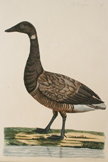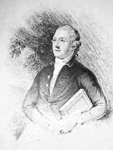
 |
(Click images to enlarge and for purchase information.) Want to know more about prints? |
|||
| Prints are copper plate engravings with original hand coloring from The British Zoology (1761-1766) and are approximately 14.75" x 21" in size.
Thomas Pennant was one of the foremost naturalists, travel writers, and antiquarians of the early 18th century. Born into an old Welsh family in Downing, Flintshire in 1726, Pennant was drawn to the study of natural history at a young age. After many years of determined education and research, Pennant made acquaintances with several well-known individuals including Carolus Linnaeus. In 1757, Linnaeus promoted Pennant’s election as a member of the Royal Swedish Society of Sciences. A few years later, in 1766, Pennant’s first work The British Zoology was published, which was followed by his election as a fellow of the Royal Society of London, then the most prestigious scientific body in the world.The magnificent engravings from his British Zoology work were created by Peter Mazell based on drawings by Peter Paillou and others and feature original hand-coloring.
|
||||











